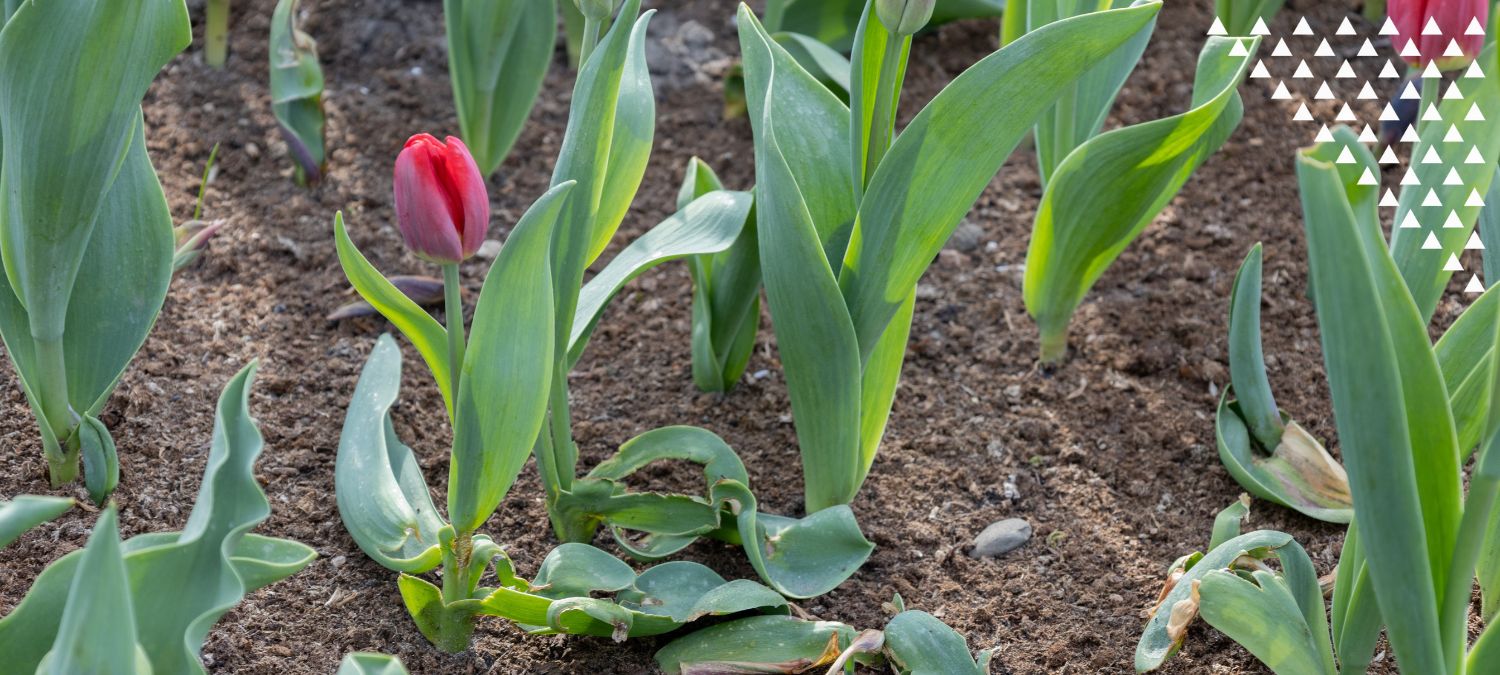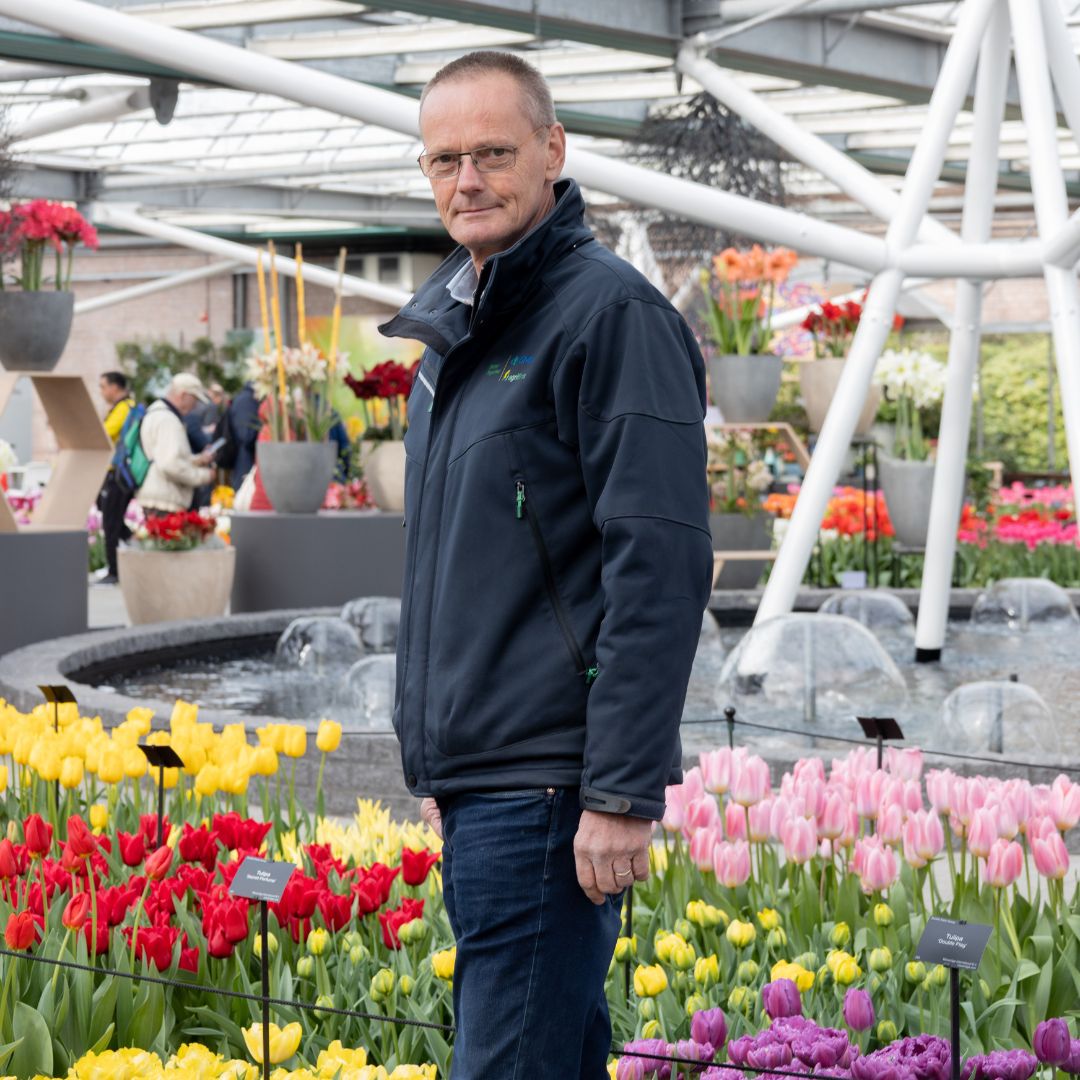
Paul Duindam, Advisor flower bulbs
About 25 years ago, Paul Duindam started at Agrifirm-GMN, then of Gent van der Meer Nuyens. As a consultant in Voorhout and the surrounding area, he visits customers with a wide range of crops. Main and secondary crops, such as tulips, hyacinths, dahlias, crocuses and alliums. Customers in South Holland rely on his knowledge and practical experience. Does he also have a favorite crop? "Definitely! The tulip is number one with me."
Growing advice to the Keukenhof
Every year, hundreds of thousands of people travel to Lisse to visit the Keukenhof. Among all these visitors, Agrifirm-GMN advisor flower bulbs Paul Duindam can regularly be found. "Sometimes they want you to look over their shoulder," he says.
It is busy at the entrance to the Keukenhof. Both national and international visitors are eager to enter. "That remains special to see," Paul said. "Although in the past two years this was not a given. The park was in full bloom, but the doors remained closed. Fortunately, now (2022, ed.) we can enjoy it again."
-

Paul has been involved with the Keukenhof as a consultant for five years now. "A number of years ago, Agrifirm-GMN was brought in to help look at the quality of the crops. This is because the Keukenhof receives bulbs from growers, traders and various other bulb companies. They are all assigned a number of beds in which to plant their product. It's a huge diversity of varieties from all over the country."
In the fall, Paul's job is to check the bulbs for quality. "Then in September and October I'm here twice a week to check the condition of the bulbs. In 99 percent the quality is fine, but you don't want to take a risk." In addition, Paul conducts a number of workshops each year for the employees, such as on recognizing virus-sick plants.
Rhizoctonia
In early spring, Paul is back to check the emerging bulbs. A major challenge in the Keukenhof is the fungus Rhizoctonia solani, which can cause a lot of failure after emergence. "The fungus stays in the soil for a long time," Paul explains. "A grower can prevent or limit damage through crop rotation. At the Keukenhof, this is more difficult. There is intensive cultivation on the same soil year after year. This gives the fungus more chance."
Not only in the tulip, but also in other spring crops, damage by Rhizoctonia solani is easy to see. Paul: "Look, there those bare spots in the hyacinths. You can see that the crop has been affected by the fungus." If the soil is heavily infested, it makes sense to dig it down 30 to 40 cm and backfill it with clean soil. Paul comments, "That is sometimes quite a challenge. In addition to spring flowering plants, the Keukenhof is full of trees with hefty roots. So excavation is not always possible."
Open for two months
The Keukenhof is open for two months every year. Paul: "After this, the diggers are ready to get to work. In a few weeks, all the bulbs are uprooted to give the soil as much rest as possible, preventing diseases from spreading further." So after two months, it's done for the public. But not for the staff and for Paul. Preparations for the next Keukenhof are restarted immediately afterwards.
This interview previously appeared in "Bol&Teelt," the magazine for members of the cooperative.


